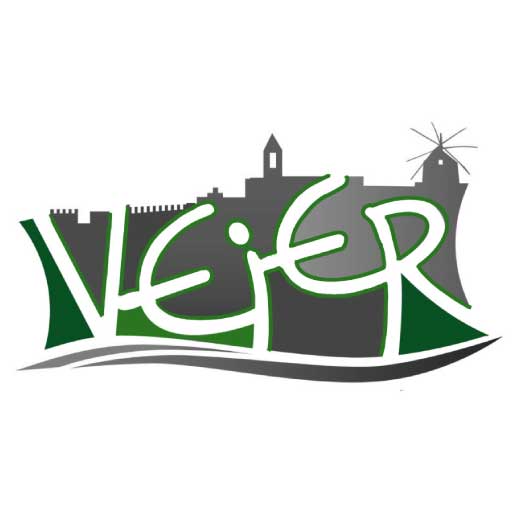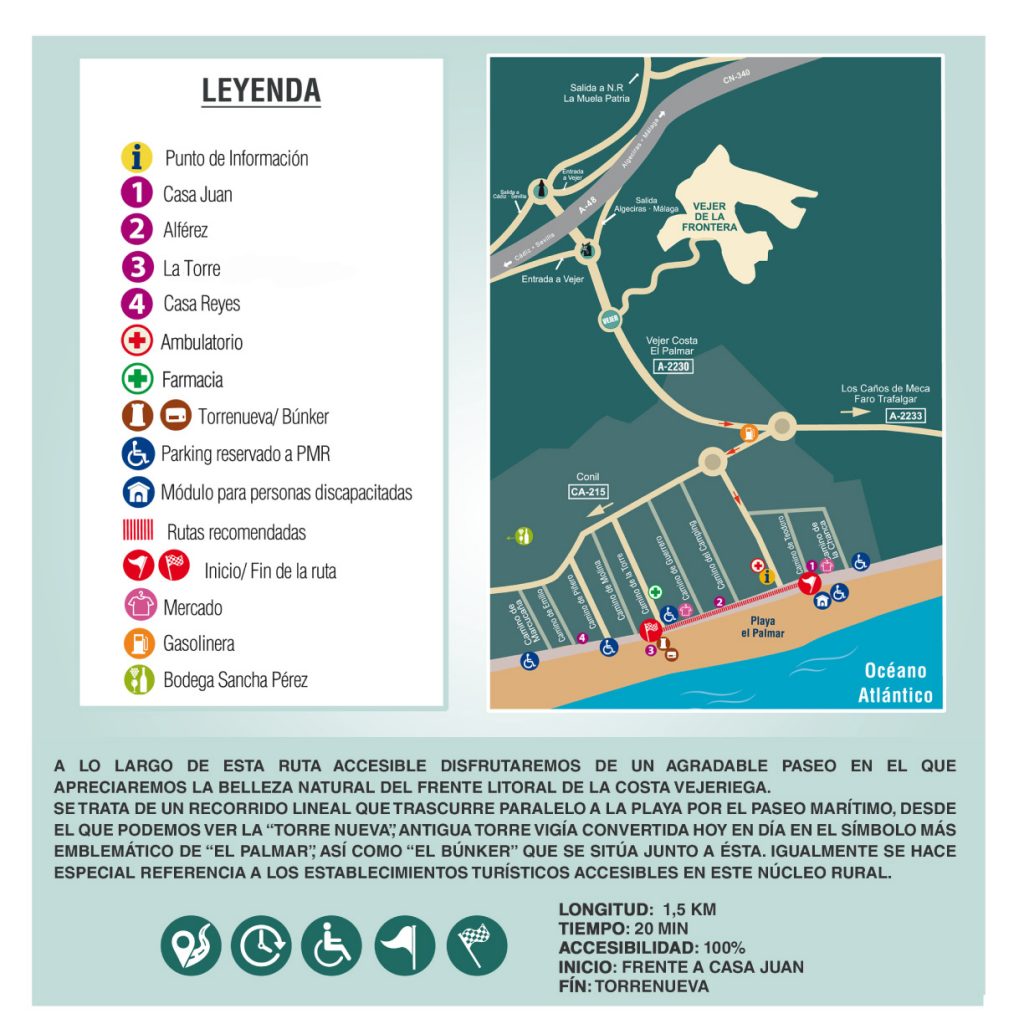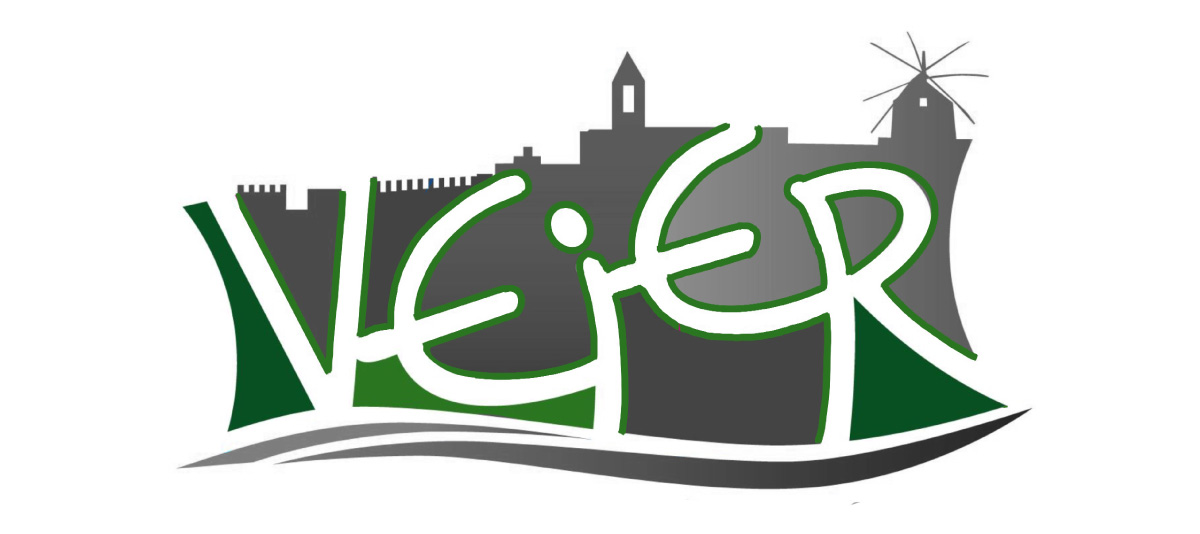
WHAT TO DO
ACCESSIBLE TOURISM
TWO ROUTES: VEJER COSTA EL PALMA OR EXTRAMUROS, A CHOICE TO ENJOY.
ROUTE VEJER COSTA EL PALMAR
Located in the municipality of Vejer de la Frontera, El Palmar is one of the few unspoilt beaches that still exist on the Costa de la Luz. Its incomparable beauty, fine golden sand, crystal clear waters and dreamlike sunsets make it one of the best destinations to escape in communion with nature.
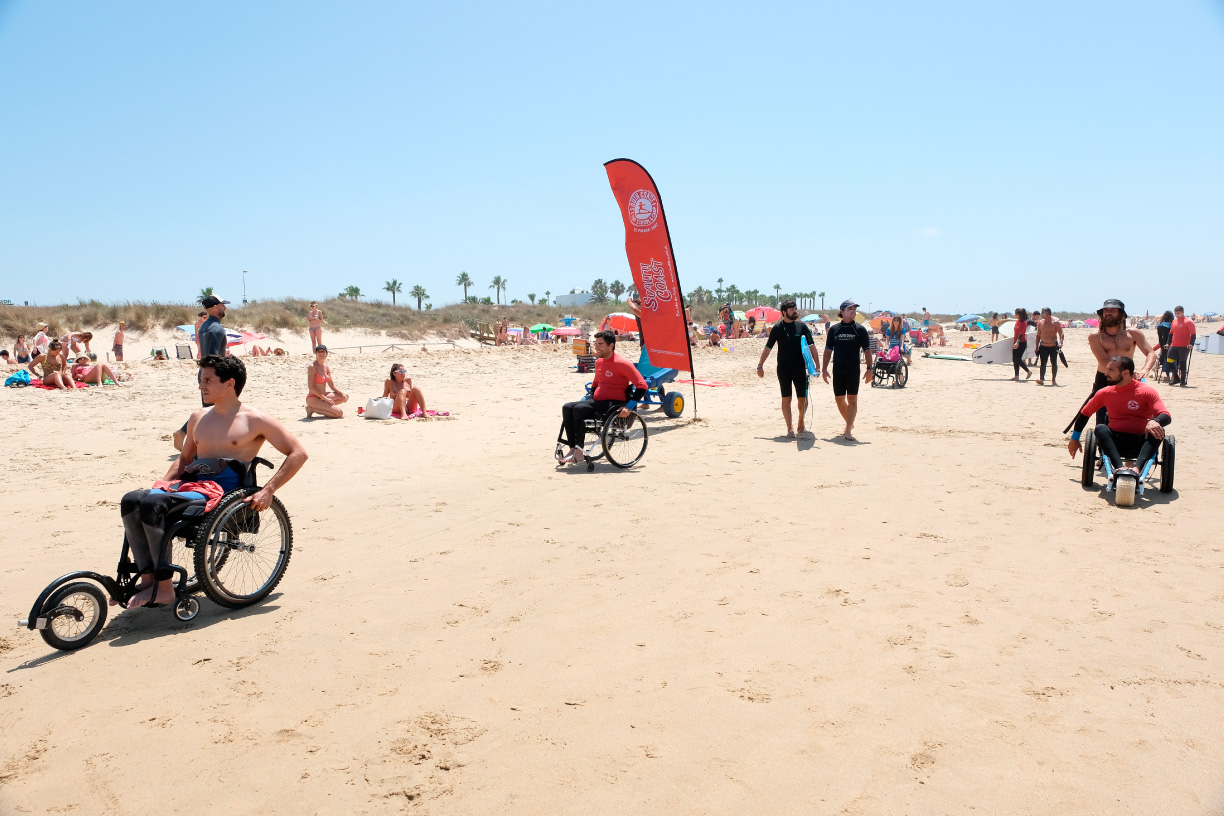
Enjoying its magical sunsets on the different terraces enlivened by live music is a real pleasure for the senses.
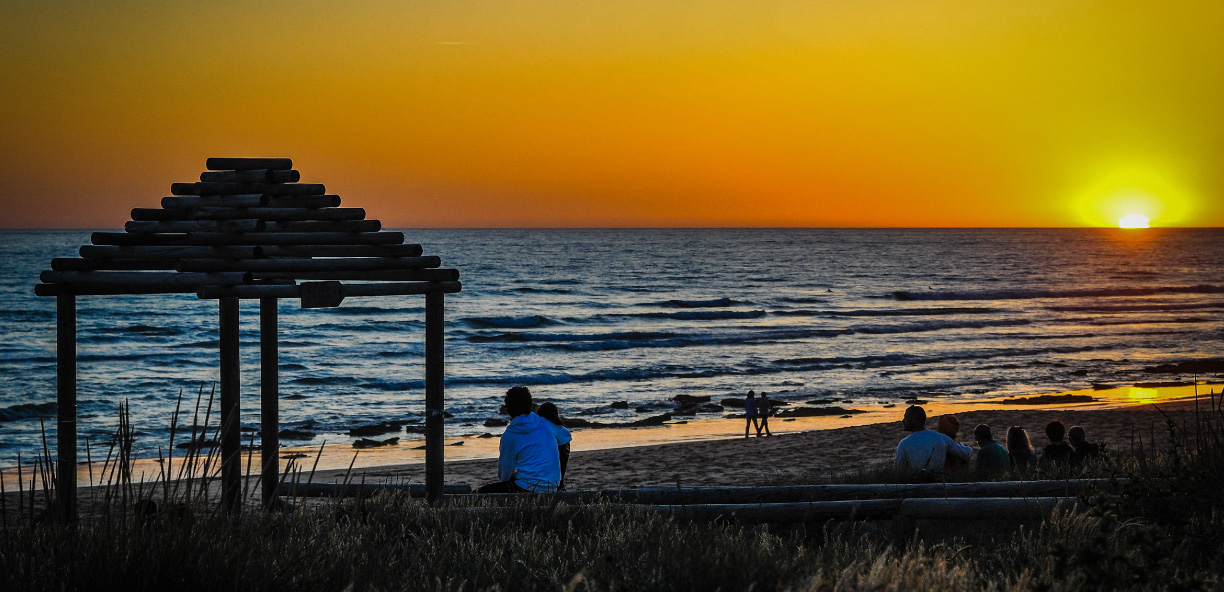
The beach of El Palmar offers an accessible promenade not only on the way to and from the beach, but also on the access to the beach.
The beach of El Palmar offers an accessible promenade not only on the way to and from the beach, but also on the access to the beach.
This has enabled us to design a linear, completely flat route that runs parallel to the beach for 1.5 km.
The route starts at the module adapted for people with disabilities located in front of the Casa Juan Restaurant.
This module has a reserved parking area with 6 parking spaces and a hut with two showers, toilets, transfer stretcher, lockers and two aquatic chairs for bathing.
It also offers brochures with the beach services.
Access from the module to the beach is via a ramp, albeit with a very steep slope.
At both ends of the route (in front of the Casa Francisco Restaurant and the La Torre Restaurant) it is possible to find rescue and infirmary modules, which are available during the summer season, although their access ramps are somewhat steep.
From the beginning of the Route we can see a great variety of tourist establishments all along the promenade: shops, surf schools, restaurants, burgers, bars, chill-outs… with a very cosmopolitan atmosphere.
We highlight the great entertainment and the possibility of enjoying live music in many venues.
To access this area from the promenade, there are several zebra crossings, duly signposted and with ramps at zero level. However, in this part there is no pavement as such, but rather a sandy floor, sometimes more compacted, sometimes less.
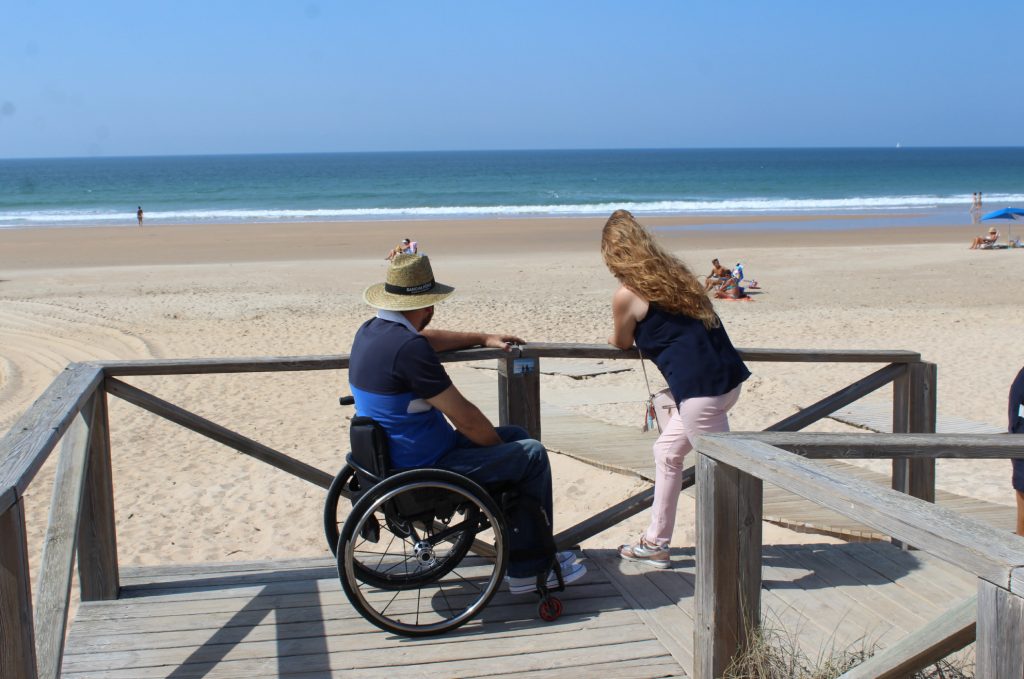
In general, a wheelchair user can get around with some difficulty or with some assistance.
Towards the centre of the route, on this side of the road, there is a reserved parking area (3 spaces).
Returning to the promenade, we will find numerous walkways along the entire route that allow access to the interior of the beach (some gentler than others).
At the end of the tour we will be able to see the following places of tourist and historical interest:
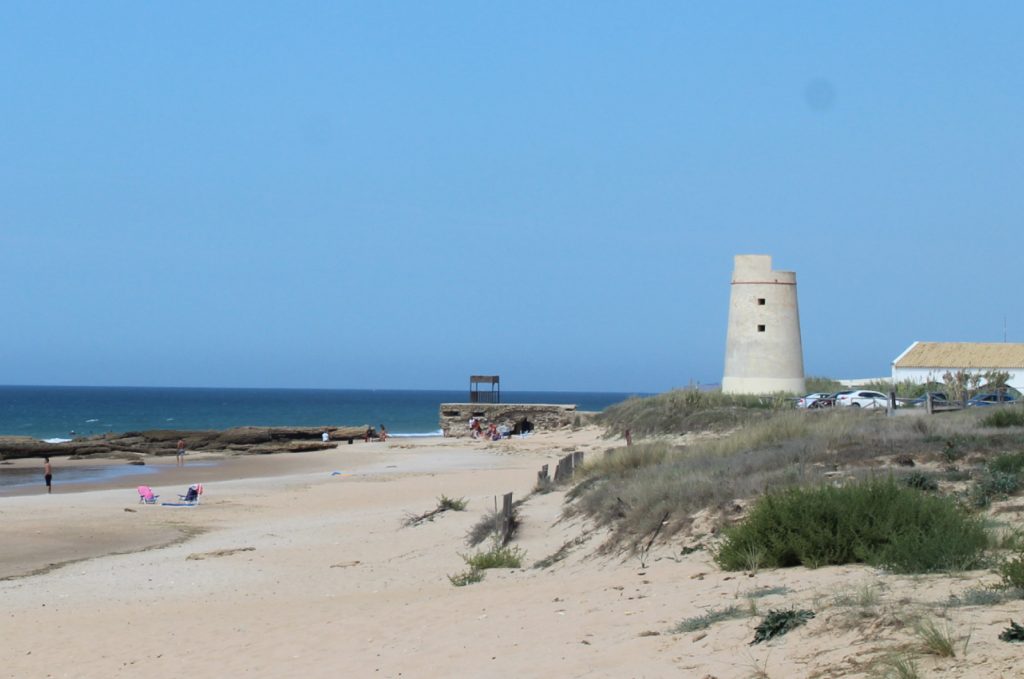
Torre Nueva, a defensive tower built between the 17th and 18th centuries by King Philip II. It is cylindrical in shape, with a single interior door, and there is only one vaulted room. Its function was to guard the coast to prevent the invasion of pirates and bandits, for which it communicated with other towers in the area. It cannot be visited, but it is easily accessible.
The El Palmar Bunker, located next to La Torre Nueva. It is a small bunker armed with heavy weapons that battled to the north-west and south-east of the beach. It belongs to the network of bunkers built during the 1940s. It is not open to visitors and access to it is via an inaccessible path. From the terrace of the Restaurant La Torre you have a good view of it.
Recommended visit: Bodega Almazara Sancha Pérez.
The Bodega Sancha Pérez is a family business of undeniable tourist interest, where you can learn the secrets of the artisan and ecological production of wine and oil.
This winery is committed to the agri-food transformation of two millenary crops: the olive tree and the vine, which played an important role in the economy of our town from the 17th to the 19th centuries.
Address: Núcleo Rural El Palmar. Conil – El Palmar, CA 2233. (Road at the Conilete stream bridge).
Further information: www.sanchaperez.com
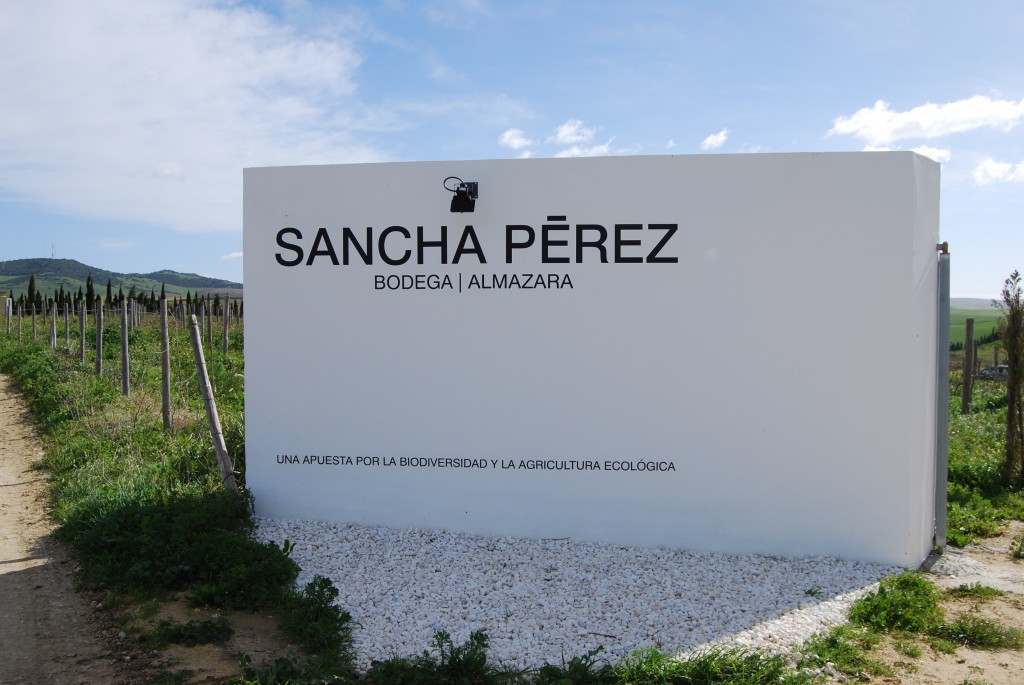
OTHER HIGHLIGHTS: MARKETS
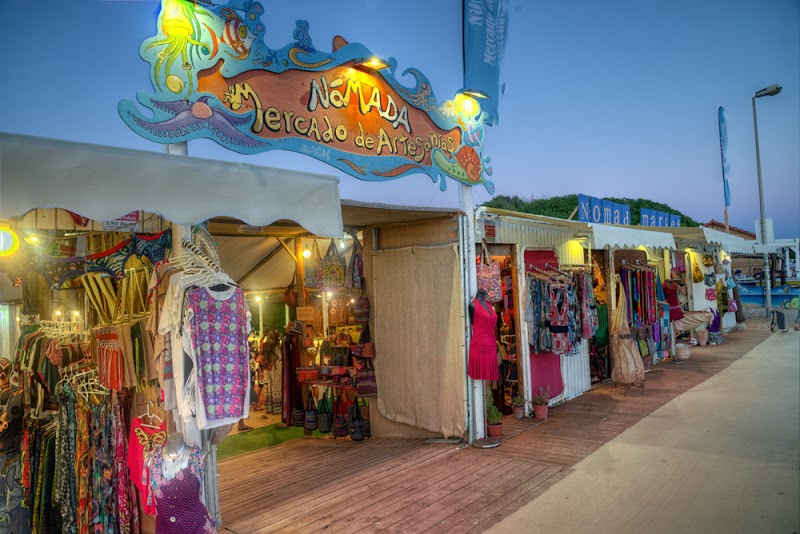
Nomad market, a set of various shops arranged in a structure reminiscent of a large stall. It has an adapted toilet. The access through the main door has a steep ramp that ends in a step, so it is not recommended especially for electric wheelchairs.
However, it has an access to the rear. This access runs along a sandy path, although it has been announced that for the next season some improvements will be made to make it more comfortable for wheelchair users. It is open from 1 June to 15 September.
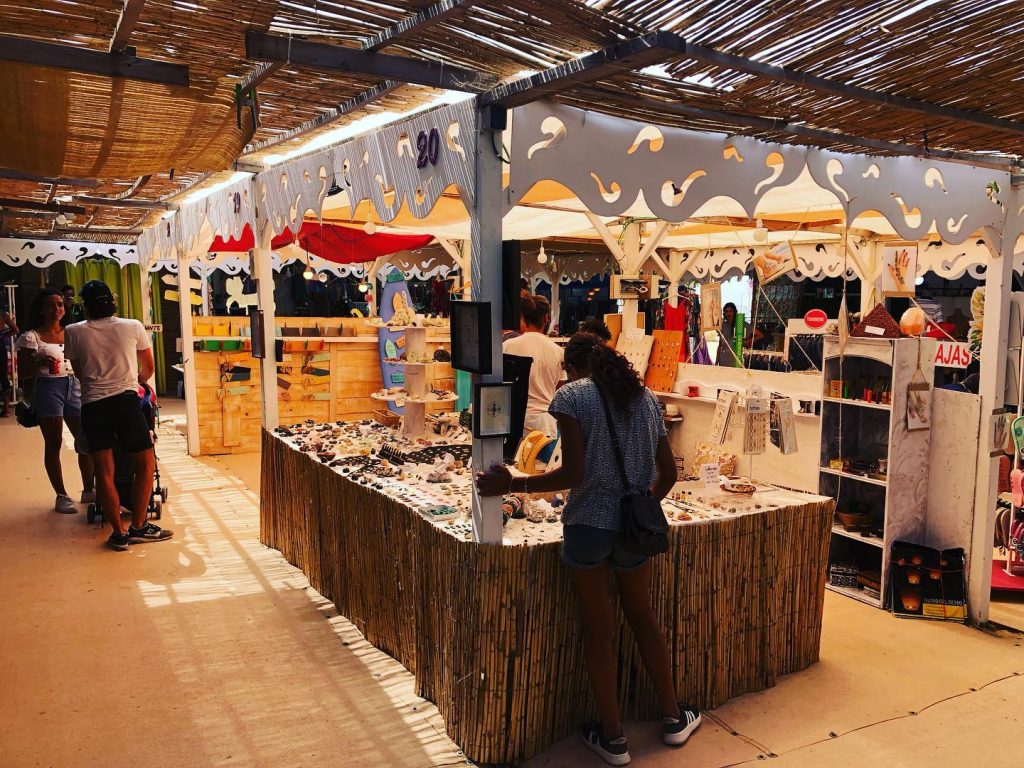
Baraka market located next to the Casa Juan Restaurant. Like the previous one, you can visit different clothing and handicraft shops under the same structure. It is fully accessible and has an adapted portable toilet. The opening period is from June 10th to September 20th.
to be considered
1.-
As far as water sports are concerned, we can highlight that along the route there are different establishments that not only have accessible access to their facilities, but have also previously worked with people with disabilities. These companies are the following:
- Kotadalu: www.kotadalu.placestars.com (Persons with reduced mobility)
- El Palmar Sur Academy: www.elpalmarsurfacademy.es (Autistic)
- Escuela de Surf: www.elpalmarsurf.com (Persons with reduced mobility)
2.-
All along the beach, there are several car parks with reserved parking spaces for people with disabilities:
- Parking Costa El Palmar or Parking El Costa. (Within the accessible route)
- Parking El Palmar Centro or Parking Aquí Me Quedo. (Outside the accessible route)
COMPANIES THAT ARE FRIENDS OF ACCESSIBLE TOURISM IN EL PALMAR:
Restaurant Casa Juan: The restaurant is accessible in all its rooms, you only have to ask for an access ramp to the toilets.
For more information:
Restaurant Alférez: Fully adapted with the exception of a small step of about 5 cm in the interior lounge.
For more information:
Restaurant la Torre: The entrance door has two steps, although it is accessible from the back terrace; to do so, you have to go around the establishment. Once on the terrace, the restaurant is accessible in its various rooms.
For more information:
Casa Reyes Restaurant: This establishment is located off the route, at the end of the promenade road in the direction of Conil. There are also 4 parking spaces for people with disabilities between the restaurant and Restaurante el Pájara Verde.
For more information:
ROUTE OUTSIDE THE WALLS
Through this Accessible Route we will discover the Area Outside the Walls, from where we will appreciate part of the walled enclosure and enjoy beautiful views.
Welcome to one of the most beautiful villages in Spain.
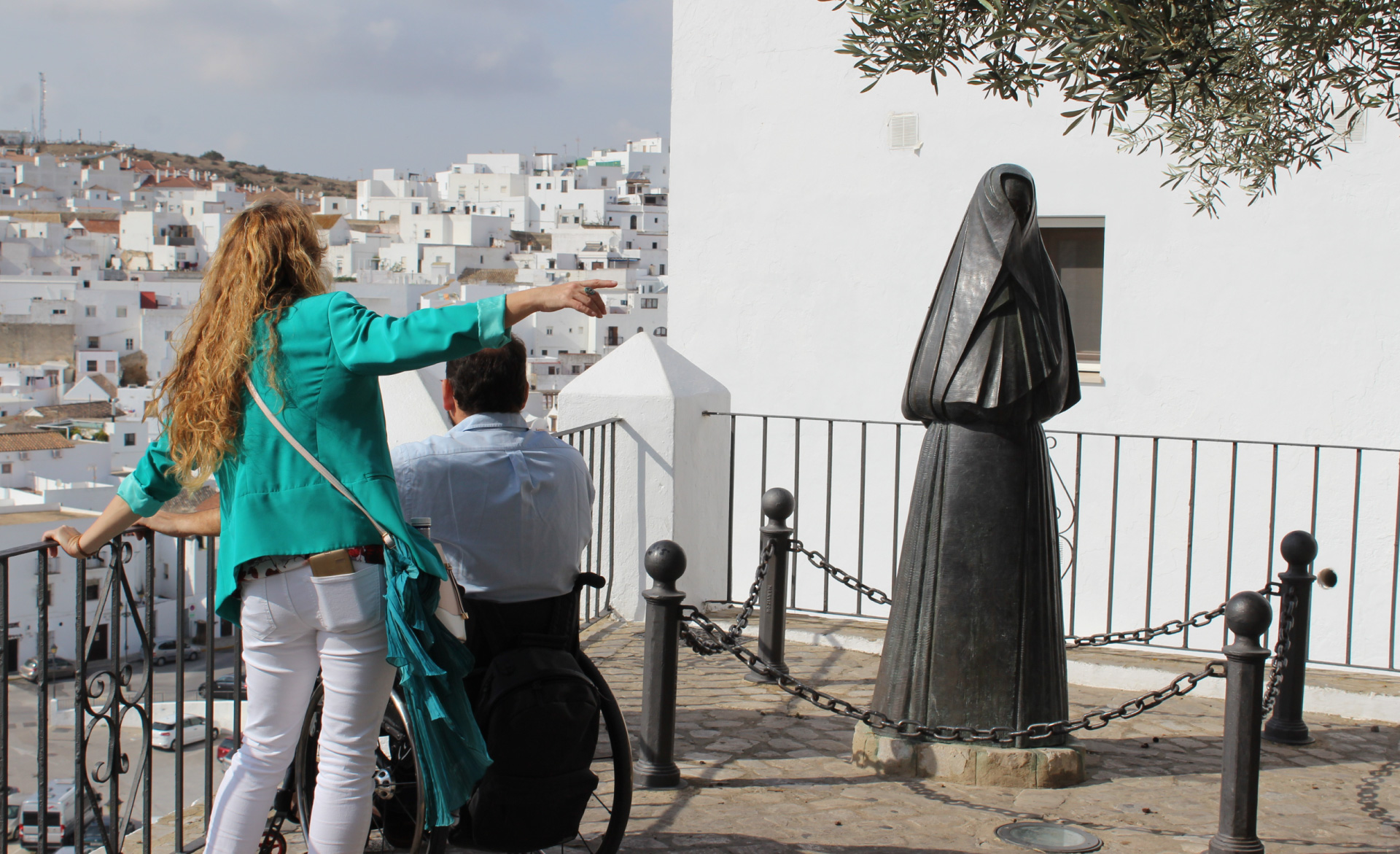
plaza de españa
The Extramuros Route has a linear layout and begins in the Plaza de España (16th-17th century). It was formerly used by noblemen and knights as a venue for bullfighting festivities, as well as being a meeting point for commercial exchanges.
The fountain in the centre of the square dates from 1955 and is made of Sevillian tiles. Popularly known as the "Pl. de los Pescaítos", nowadays it is the setting for the main events of the most important festivity in the town, "La Velada en honor a la Virgen de la Oliva", Patron Saint of Vejer. (from 10 to 24 August). Access to this square is via two somewhat steep ramps.

ARCH OF THE VILLA
Opposite the Town Hall stands the Town Hall, and next to it, the Arco de la Villa (12th-13th century), one of the four original gates of the walled city. This gate was the most important, as it connected with the slope of La Barca and the Concejo fountain, although it has not been preserved in its original state.
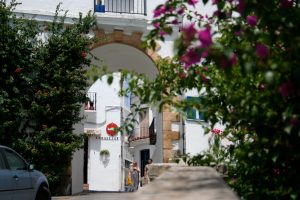
MAYORAZGO TOWER
Moving in the direction of Pl. del Padre Caro. This route has a small difficulty, as the pavement is very small, so you have to walk on the road itself.
To the left of this street is a stretch of the wall (12th-13th century) and on the corner of it stands the Torre del Mayorazgo, whose function was to guard against possible sieges
.
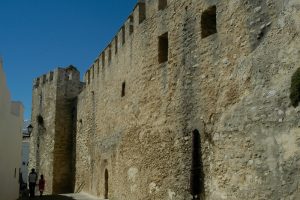
FATHER CARO SQUARE
In Father Caro Square, on the façade of the Church of La Merced (17th century) we find a relief in homage to the typical costume of the vejeriega woman,
El Cobijado. Its origin is Castilian, with Islamic influences, beginning to be used during the 16th and 17th centuries. It consists of a white petticoat with embroidered strips, a white blouse with lace, a black sackcloth tied at the waist and a black cloak that covered the woman completely, leaving her left eye uncovered. The costume was banned in 1936, as it was used to mask crimes. Its use was recovered in 1976, and it can now be seen during the Patron Saint Festivities.
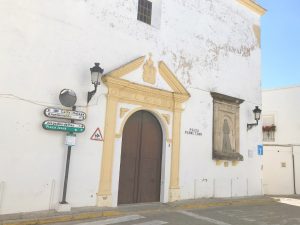
CORREDERA
From here we can cross the pedestrian crossing to access the Calle Corredera, an impressive natural viewpoint overlooking the countryside. This first stretch of road is very narrow and somewhat steep. We must drive with caution, although pedestrians have the right of way.
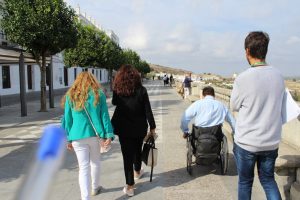
SCULPTURE BY JUAN RELINQUE
To our left we find the sculpture that pays homage to Juan Relinque, a local hero who defended the Hazas de Suerte, communal lands donated by the Kings of Castile to the town of Vejer to repopulate the area after the Reconquest. The Duke of Medina Sidonia wanted to take possession of these lands. After several lawsuits, a judgement was handed down in favour of the neighbours. The Hazas de Suerte is one of the most deeply-rooted traditions in the village and is drawn every four years, on 22 December.
Next to the sculpture is another of the gates of the Walled Enclosure, the Arch of Sancho IV (12th-13th century).
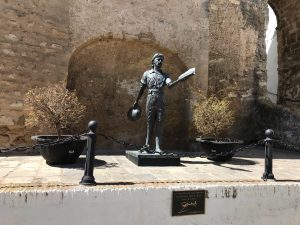
CINEMATOGRAPH AND THE CORREDERA TOWER
Continuing along the route, we come across a sculpture-like cinematograph on our right. This was the site of the old "Cine Corredera" which was in operation from the 1950s to the 1970s.
A little further on, we enter the widest part of this promenade from where we can see to the left part of the old wall and another of the watchtowers, the "Torre de la Corredera".
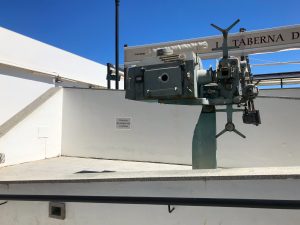
VEJERIEGA COUNTRYSIDE
To our right, we can enjoy a splendid landscape towards the Vejeriega countryside and the Janda region. It was here that the Battle of La Janda or the Battle of Guadalete took place (year 711), in which the North African troops of Tarik defeated D. Rodrigo, thus leaving Vejer under Muslim rule for more than five centuries.
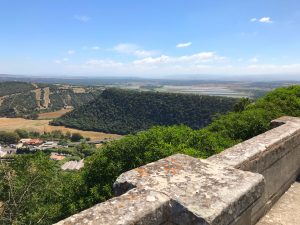
PLAZUELA
At the end of the street, turn left towards the Plazuela (this section is a little difficult due to the narrowness of the pavement and the steepness of the terrain).
This square connects the old town with the new area. Here we find the old Convent San Francisco (16th century), nowadays converted into a hotel, and the Casa de la Juventud (Youth House), where you can ask for information about tourist and cultural activities.
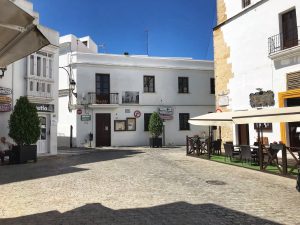
C/ JUAN RELINQUE Y PLAZA DE SAN FRANCISCO
From this Plazuela we continue along C/ Juan Relinque, popularly known as the Calle Alta,
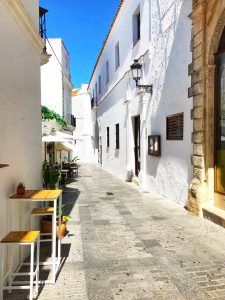
The first part of this street is pedestrianised. It is full of shops, bars, ice-cream parlours... to our right we find an archway through which we access San Francisco Square, where we find the Municipal Cinema Theatre and the Food Market, converted into a gastronomic market. (Both accessible).
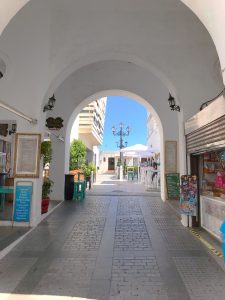
JUNCTION WITH C/ SANTÍSIMO
We continue our walk along C/ Juan Relinque.
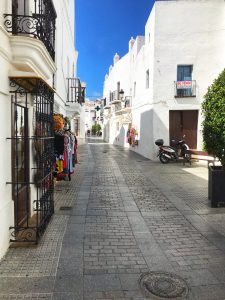
We will enjoy the beauty of its typical houses with white façades and Andalusian patios (portals nº 25, 18, 22 and 53. They are not accessible, they can be seen from the outside) and beautiful views of the monumental area, highlighting:
The one at the junction with Santísimo Street. From here you can see the Parish Church of Divino Salvador (16th century). From here the route is semi-pedestrianised.
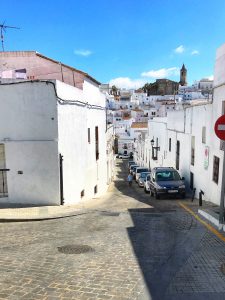
JUNCTION WITH C/ SAGASTA
The one at the junction with C/ Sagasta. From here you can see the dome of the old Convent of the Conceptionists (16th century), currently home to the Museum of Customs and Traditions, the Arch of the Nuns (18th century) (one of the most typical streets of the village) and the Castle (10th-11th century), as well as part of the layout of the wall.
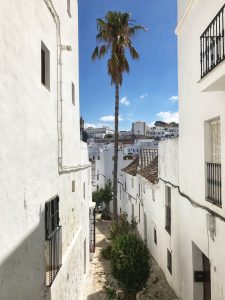

Oficina de Turismo de Vejer
- Avda. de Los Remedios, 2 11150 Vejer de la Frontera, Cádiz.
- 956 451 736
- oficinaturismovejer@hotmail.com
